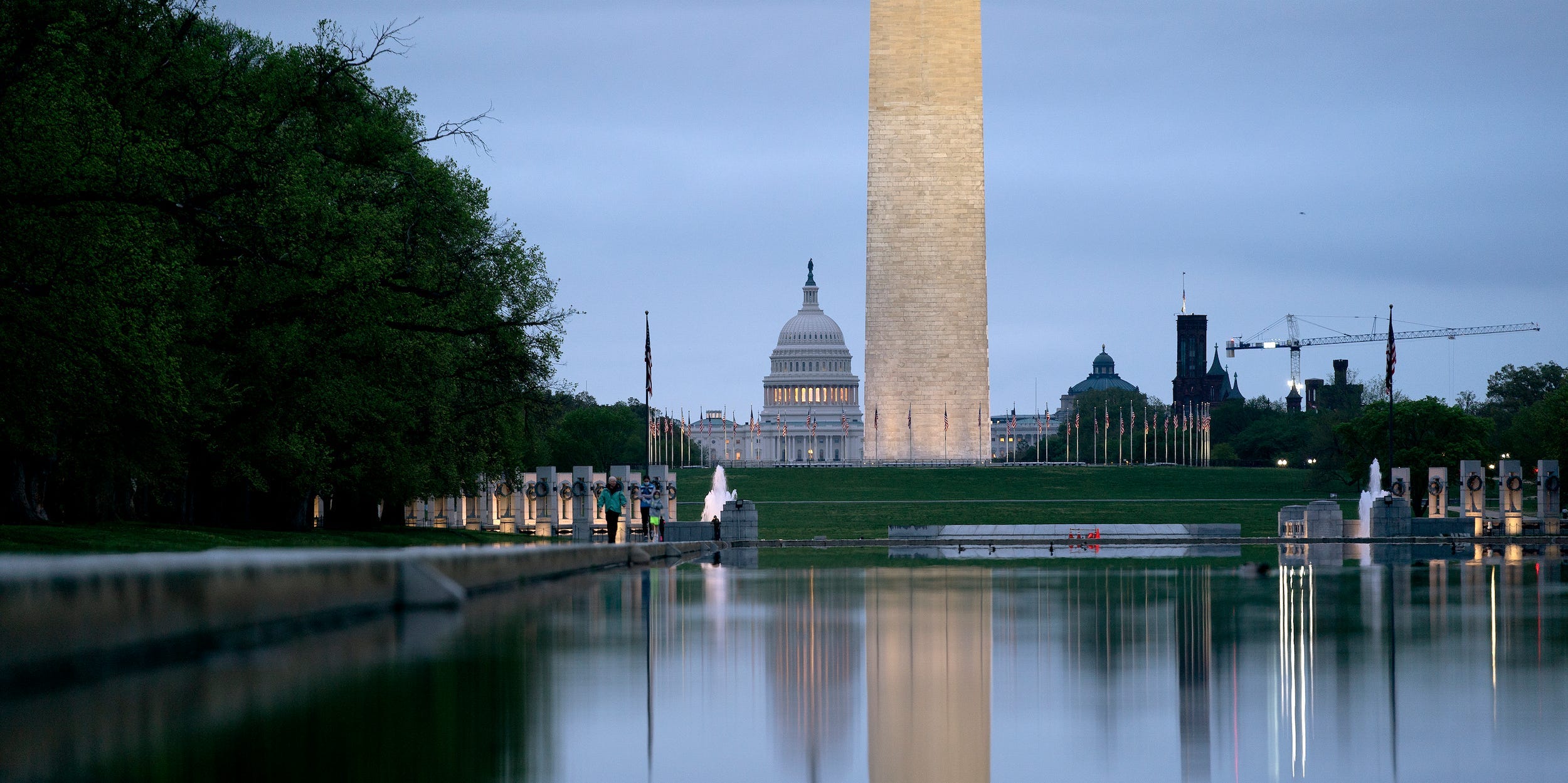
Stefani Reynolds/Getty Images
- The US budget deficit widened to a record $1.7 trillion in the first half of the fiscal year.
- The government spent $927 billion in March, with much of the funding linked to Democrats' stimulus.
- White House and Fed officials have said low interest rates ensure the debt doesn't present an immediate danger.
- See more stories on Insider's business page.
The US budget deficit climbed to a record $1.7 trillion last month after stimulus spending in March lifted the shortfall.
The government spent roughly $927 billion as the first half of the fiscal year came to a close, the Treasury Department said Monday. Much of the surge was linked to Democrats' $1.9 trillion stimulus package, which included $1,400 direct payments and expanded unemployment benefits that reached households in a matter of days.
Tax revenues only amounted to about $268 billion, leading the month's deficit to reach $660 billion. That compares to a deficit of $119 billion in March 2020, when the economy was first frozen by the pandemic. The deficit for fiscal 2021 is now more than double what it was in the year-ago period.
The federal budget gap widened significantly last year as the health crisis prompted historic fiscal spending on stimulus and safety measures. And while vaccination has revitalized the economic recovery, additional relief packages passed by President Donald Trump late last year and President Joe Biden in March extended the spending spree.
The Treasury's update comes as the federal debt – the amount of money owed by the US government – already hovers around levels not seen since the 1940s. The debt reached 129% of US gross domestic product in the fourth quarter of 2020, according to the US Office of Management and Budget. That level has prompted some to call for a reversal of recent aid measures and a return to more austere spending activity.
"While much of the deficit spending during this crisis was justified, the latest package was arguably twice as large as it needed to be and not as well targeted as the other relief packages," Maya MacGuineas, president of the Committee for a Responsible Federal Budget, said in a statement, adding lawmakers now need to "resist old habits of adding to the deficit."
Yet officials guiding the country through the pandemic recession and nascent recovery aren't in such a rush. The federal debt pile eventually needs to be put on a more sustainable path, but recovering from the coronavirus pandemic is the government's top priority, Treasury Secretary Janet Yellen said during her January confirmation hearing. Historically low interest rates ensure the debt can be managed at least until the economy is on stable footing, she added.
"To avoid doing what we need to do now to address the pandemic and the economic damage that it is causing would likely leave us in a worse place," Yellen said.
Federal Reserve Chair Jerome Powell made similar remarks in March. There will come a time where government spending will have to be more sustainable, he said, "but that time is not now."
The ballooning deficit hasn't stopped Biden from pushing for more spending. The president proposed a $2.3 trillion infrastructure plan last month that includes funds for nationwide broadband, affordable housing, and the renovation of roads and bridges. It is the first portion of a two-part package that will reportedly cost up to $4 trillion.
The White House has also pitched a collection of tax hikes to offset the additional spending. Yet Republicans have fiercely opposed such increases, setting up a partisan battle over Biden's spending plans and the federal debt as a whole.
Dit artikel is oorspronkelijk verschenen op z24.nl
